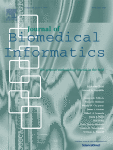A smartwatch-based framework for real-time and online assessment and mobility monitoring
Smartphone and smartwatch technology is changing the transmission and monitoring landscape for patients and research participants to communicate their healthcare information in real time. Flexible, bidirectional and real-time control of communication allows development of a rich set of healthcare applications that can provide interactivity with the participant and adapt dynamically to their changing environment. Additionally, smartwatches have a variety of sensors suitable for collecting physical activity and location data. The combination of all these features makes it possible to transmit the collected data to a remote server, and thus, to monitor physical activity and potentially social activity in real time. As smartwatches exhibit high user acceptability and increasing popularity, they are ideal devices for monitoring activities for extended periods of time to investigate the physical activity patterns in free-living condition and their relationship with the seemingly random occurring illnesses, which have remained a challenge in the current literature. Therefore, the purpose of this study was to develop a smartwatch-based framework for real-time and online assessment and mobility monitoring (ROAMM). The proposed ROAMM framework will include a smartwatch application and server. The smartwatch application will be used to collect and preprocess data. The server will be used to store and retrieve data, remote monitor, and for other administrative purposes. With the integration of sensor-based and user-reported data collection, the ROAMM framework allows for data visualization and summary statistics in real-time.

